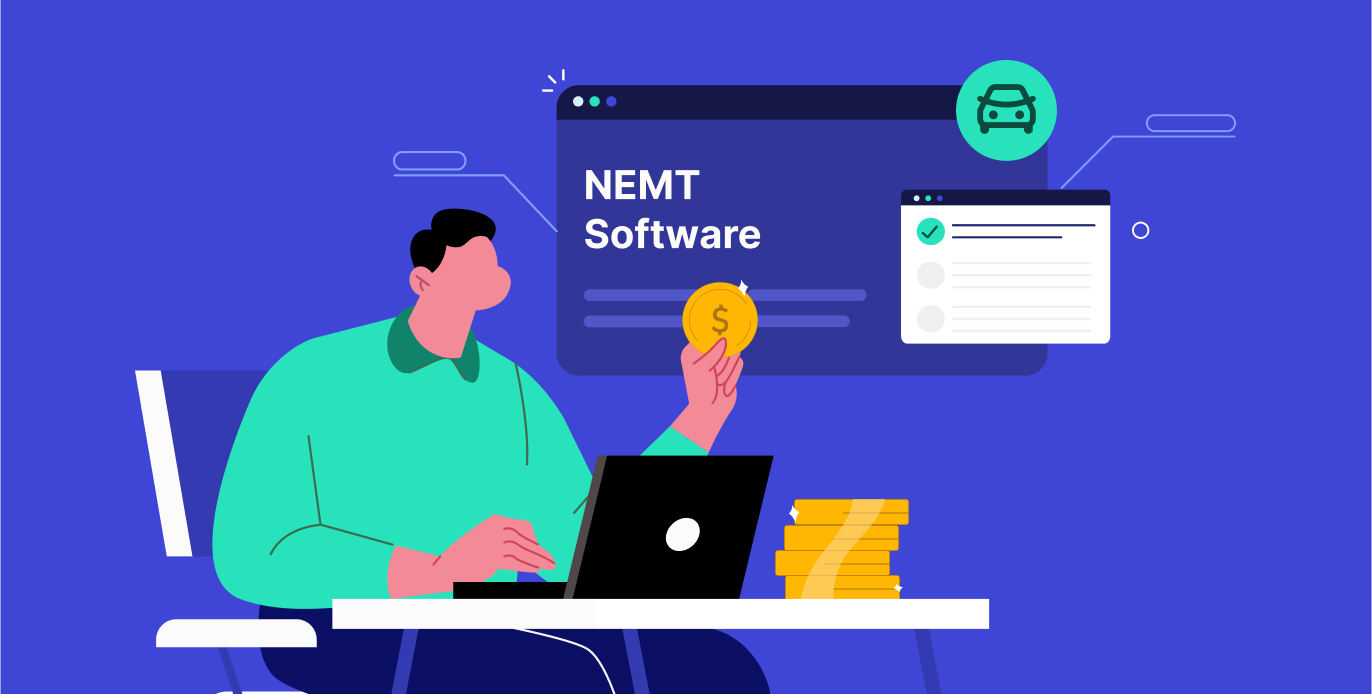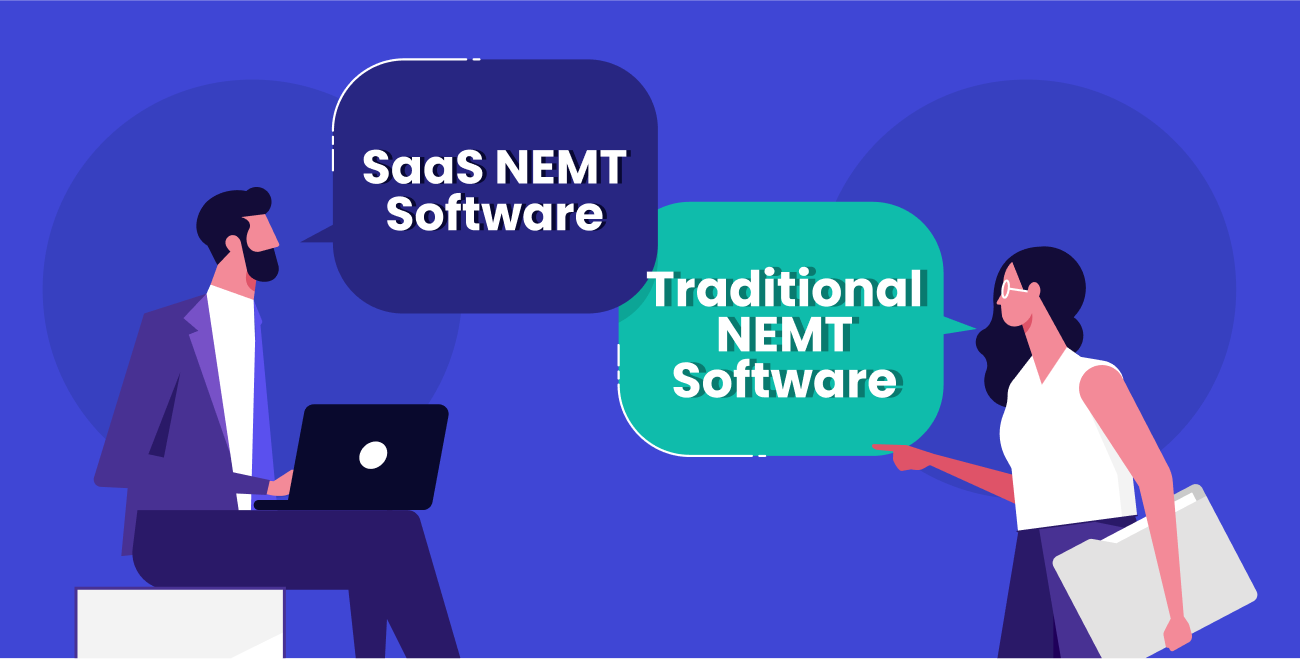
Table of Contents
In recent years, non-emergency medical transportation (NEMT) has become crucial for individuals requiring health care services but facing obstacles such as limited mobility, disabilities, low income, or remote location.
Specialized software has been created to help NEMT providers optimize their operations by managing scheduling, dispatching, routing, billing, and reporting.
However, NEMT software is not a one-size-fits-all solution, as various programs offer different features, functionalities, and prices. It’s essential for NEMT providers to evaluate their needs and budget before choosing an NEMT software that suits their business goals and objectives.
This article explains how NEMT providers can plan their budget for NEMT software by considering the initial and ongoing costs of NEMT software and its return on investment (ROI).
Do More with Less
Handle more trips with fewer dispatchers on your payroll with Tobi.
Request a DemoCounting the Cost
One of the first things NEMT providers should consider when budgeting for NEMT software is its initial and ongoing costs.
The initial cost is the amount NEMT providers must pay upfront to purchase or subscribe to the software. The ongoing cost is the amount the NEMT provider must pay periodically to maintain or upgrade the software.
The initial and ongoing costs of NEMT software vary depending on its type, size, and complexity. Some NEMT software is cloud-based, hosted on the Internet, and accessed through a web browser.
Cloud-based NEMT software typically charges a monthly or annual subscription fee based on the number of users, vehicles, or trips. Other NEMT software is on-premise and installed on the NEMT provider’s servers and computers. On-premise NEMT software typically charges a one-time license fee based on the number of users, vehicles, or trips and additional costs for installation, maintenance, and updates.
ROI of NEMT Software
Another factor that NEMT providers should consider when budgeting for NEMT software is its ROI.
This refers to the ratio of the net profit to the total cost of the software. A higher ROI means it generates more value than it costs, while a lower ROI means it costs more than it generates.
The ROI can be calculated by subtracting the total cost of the software from its total benefit and dividing the result by the total cost. The total benefit can be measured by the amount of money that the NEMT provider saves or earns by using the software, such as:
- Reduced operational costs like fuel, labor, maintenance, and insurance.
- Increased operational efficiency, including fewer missed or late trips, fewer errors or complaints, and better customer satisfaction.
- Increased revenue, such as more trips, customers, and referrals.
For example, if an NEMT provider pays $5,000 for NEMT software that saves or earns them $10,000 annually, the software’s ROI is ($10,000 – $5,000) / $5,000 = 100%. This means that the NEMT provider recovers its initial investment in the software in one year and doubles its money in the same period.
NEMT providers should estimate the ROI of different NEMT software and choose the one that offers the highest value for their money. They should also consider the software’s payback period, which is the time it takes to pay for itself.
The Affordability and Accessibility of NEMT Software
A third factor NEMT providers should consider when budgeting for NEMT software is its affordability and accessibility.
Affordability refers to the NEMT provider’s ability to pay for the software without compromising their financial stability or profitability. Accessibility refers to the software’s ease of use and availability for the NEMT provider and their staff, drivers, and customers.
The affordability and accessibility of NEMT software depend on its pricing model, payment options, and user interface. Some NEMT software offers flexible pricing models, such as pay-per-use, pay-per-mile, or pay-per-trip, which allow the NEMT provider to pay only for what they use.
Some NEMT software offers multiple payment options, such as credit cards, bank transfers, or online payments, which make it convenient for the NEMT provider to pay for the software. Look for software that offers user-friendly and intuitive interfaces, such as web-based, mobile-based, or voice-based, which make it easy for the NEMT provider and their staff, drivers, and customers to access and use.
Providers should evaluate the affordability and accessibility of different NEMT software and choose the one that meets their financial and operational needs. They should also consider the software’s scalability and compatibility, which are its ability to grow and adapt to their business.
The Quality and Reliability of NEMT Software
A fourth factor NEMT providers should consider when budgeting for NEMT software is its quality and reliability.
Quality refers to the software’s performance and functionality, like its accuracy, speed, and security. Reliability refers to the software’s availability and stability, such as uptime, backup, and support.
The quality and reliability of NEMT software depend on its technology, design, and development. Some NEMT software uses advanced technology, such as artificial intelligence, cloud computing, or blockchain, which enhances its performance and functionality.
Providers should assess the quality and reliability of different NEMT software and choose the one that delivers the best results and experience for their business. They should also consider the software’s reviews and ratings, which are the feedback and opinions of other NEMT providers who have used it.
Conclusion
Budgeting for NEMT software is a crucial decision NEMT providers must make to optimize their operations and grow their business.
NEMT software can offer many benefits, such as reducing costs, increasing efficiency, and enhancing revenue. Still, it also comes with many challenges, such as choosing the right software, paying for it, and using it to improve operations.
Tobi: An NEMT Software Solution for Efficient Operations
If you are looking for an NEMT software solution that can help you optimize every aspect of your NEMT operations, consider Tobi.
Tobi is a cloud-based NEMT software that offers a complete solution for managing all NEMT operations. It offers advanced functionalities to help transportation providers improve their service, such as:
- Automated dispatching: Tobi streamlines operations by automatically selecting and routing drivers based on real-time data and intelligent algorithms. You can also easily accommodate last-minute ride requests, leverage real-time driver tracking, and open communications between dispatchers and drivers.
- Real-time GPS tracking: Tobi provides real-time GPS tracking for all vehicles and drivers, allowing you to monitor their location, speed, and ETA. You can also use geofencing to alert dispatchers when a vehicle enters or exits a predefined area.
- Mobile app for drivers: Tobi integrates seamlessly with a mobile app for drivers, which enables them to access trip information, navigate routes, communicate with dispatchers and patients, and manage their shifts and time-off requests.
Tobi is designed to be easy to use and scalable for any size of NEMT business.
Are you curious how Tobi can help you run your NEMT operations more efficiently? Request a demo for a free 30-day trial and experience how Tobi makes your business better at every turn.


